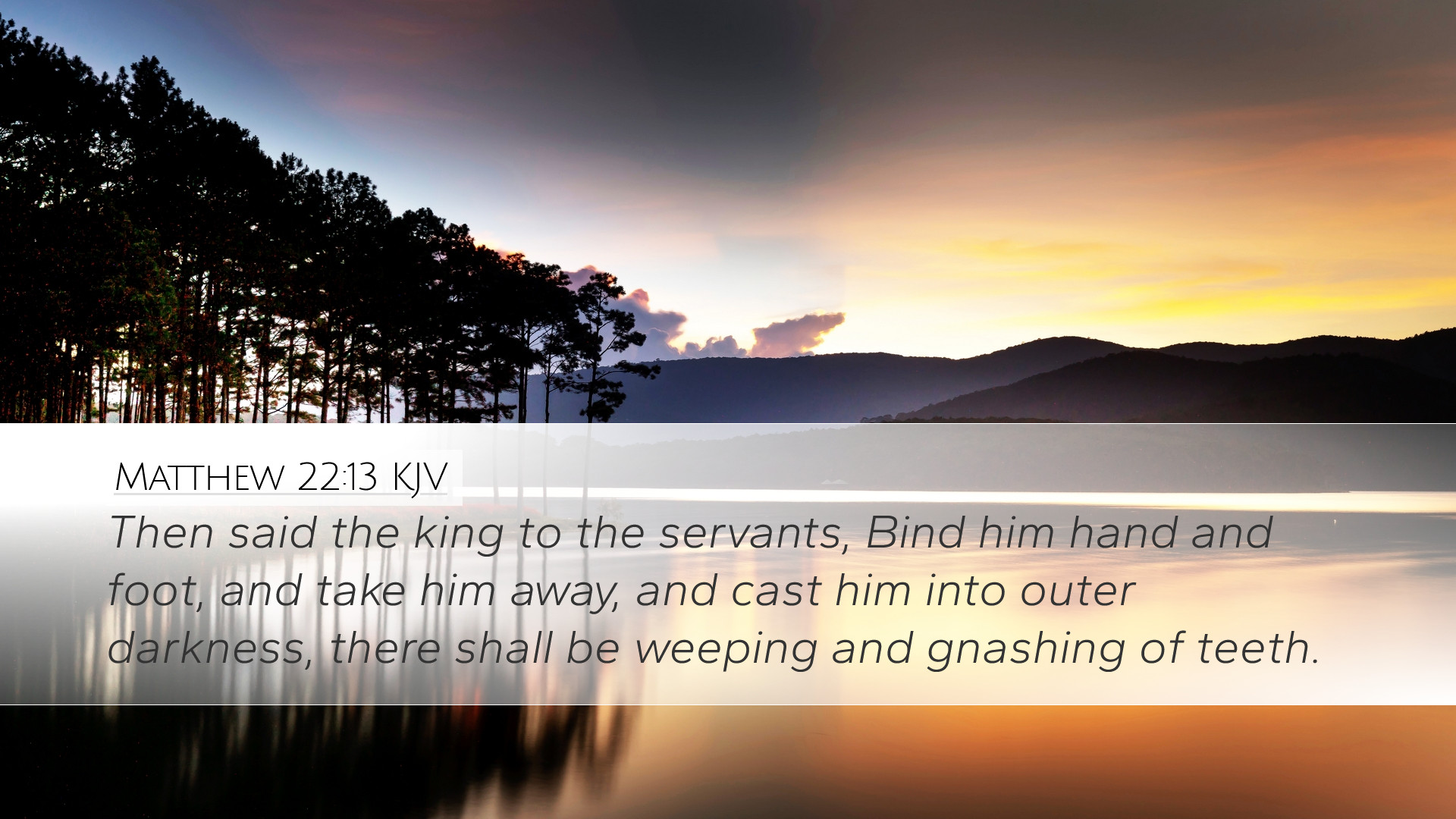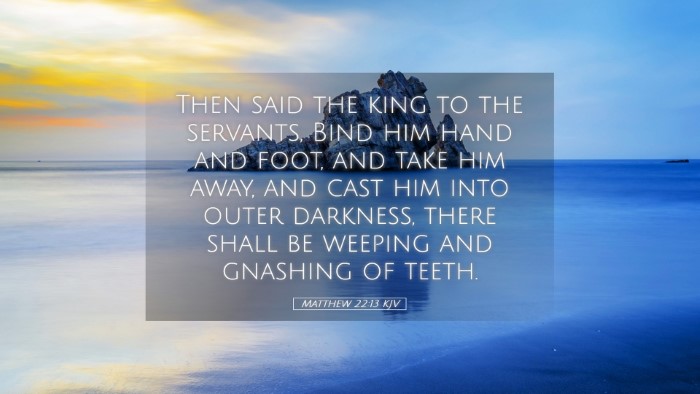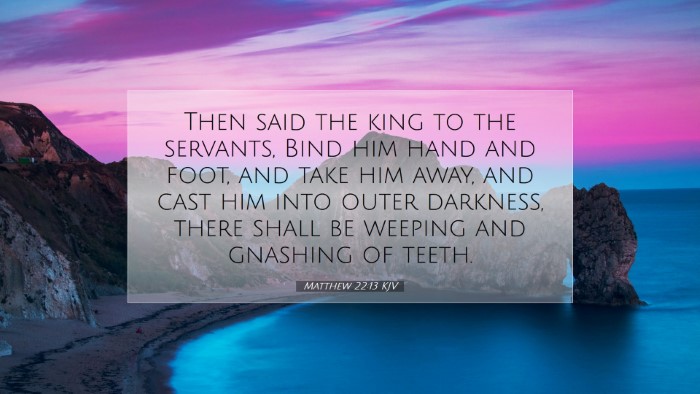Commentary on Matthew 22:13
Bible Verse: "Then the king said to the servants, 'Bind him hand and foot, take him away, and cast him into outer darkness; there will be weeping and gnashing of teeth.'" (Matthew 22:13)
Introduction
This verse forms part of the parable of the wedding feast, a significant narrative found in the Gospel of Matthew. This parable serves as a warning regarding the kingdom of heaven's nature and the response required from those who are invited. The consequences faced by the guests illustrate a deeper theological truth about acceptance and rejection of God's grace.
The Context of the Parable
Matthew 22:1-14 depicts a king who prepares a wedding feast for his son. The invited guests initially refuse to come, leading the king to extend the invitation to others. The verse in question addresses the fate of a man improperly dressed among the guests. This serves as a poignant reminder that mere participation in religious gatherings is insufficient; one must also exhibit the appropriate readiness and holiness.
Interpretation according to Matthew Henry
Matthew Henry's Commentary emphasizes the king's authority in the parable. The king, representing God, invites all to His kingdom but requires that they be clothed in righteousness. The "man without a wedding garment" symbolizes those who attempt to enter the kingdom on their own terms, without the requisite transformation that comes through faith and repentance.
The "outer darkness" signifies separation from God's presence and the ultimate consequences of rejecting His invitation. Henry notes that the phrase "weeping and gnashing of teeth" points to the intense regret and anguish felt by those who realize too late the error of their ways.
Insights from Albert Barnes
Albert Barnes' Notes on the New Testament illuminate the societal customs of the time, where a wedding garment would be expected. He points out that the lack of such a garment represents a deeper spiritual reality; it is not just about external compliance but an inner transformation. Barnes also notes that the king's stern judgment reflects God's justice, emphasizing that His grace must not be taken lightly.
The binding of the man hand and foot symbolizes the complete and irrevocable nature of his exclusion. It warns against the complacency of assuming that one can enter God's kingdom without true commitment and belonging.
Insights from Adam Clarke
Adam Clarke's Commentary provides a detailed exploration of the metaphorical implications of the wedding garment. Clarke asserts that the garment represents the righteousness of Christ, which believers must wear to enter the heavenly banquet. The absence of this garment illustrates the necessity of divine grace and transformative faith in one's life.
He further expounds on the notion of "outer darkness," linking it to spiritual desolation and eternal separation from God. Clarke encourages readers to understand this parable as a call to genuine faith and to examine their own hearts, ensuring they are appropriately clothed for the kingdom.
Theological Implications
The weight of Matthew 22:13 penetrates deeply into the theological landscape of salvation, grace, and judgment. The imagery of binding and casting out serves as a stark reminder of the seriousness with which God regards His invitations. It compels one to contemplate the nature of genuine discipleship and the consequences of spiritual negligence.
- Inclusivity of the Invitation: The parable illustrates that God's grace is extended to everyone, yet acceptance requires visible evidence of transformation.
- Judgment and Accountability: Rejecting grace or failing to respond appropriately leads to dire consequences, maintaining the theme of God's justice.
- The Importance of Righteousness: Genuine righteousness, not simply external conformity, is crucial in standing before God.
Application for Pastors and Theologians
This text beckons pastors and theologians to impart the gravity of spiritual preparedness to their congregations. It offers a powerful teaching tool emphasizing that inactive faith is tantamount to rejection of Christ's offer. Here are several considerations for practical application:
- Preaching Holiness: Encourage congregants to pursue holiness and righteousness as evidence of true faith.
- Teaching on Grace: Teach about the nature of grace and the response it necessitates—namely, a life marked by transformation.
- Evangelistic Outreach: Inspire evangelistic efforts where all are welcomed, yet clarify the expectations tied to entering the kingdom.


